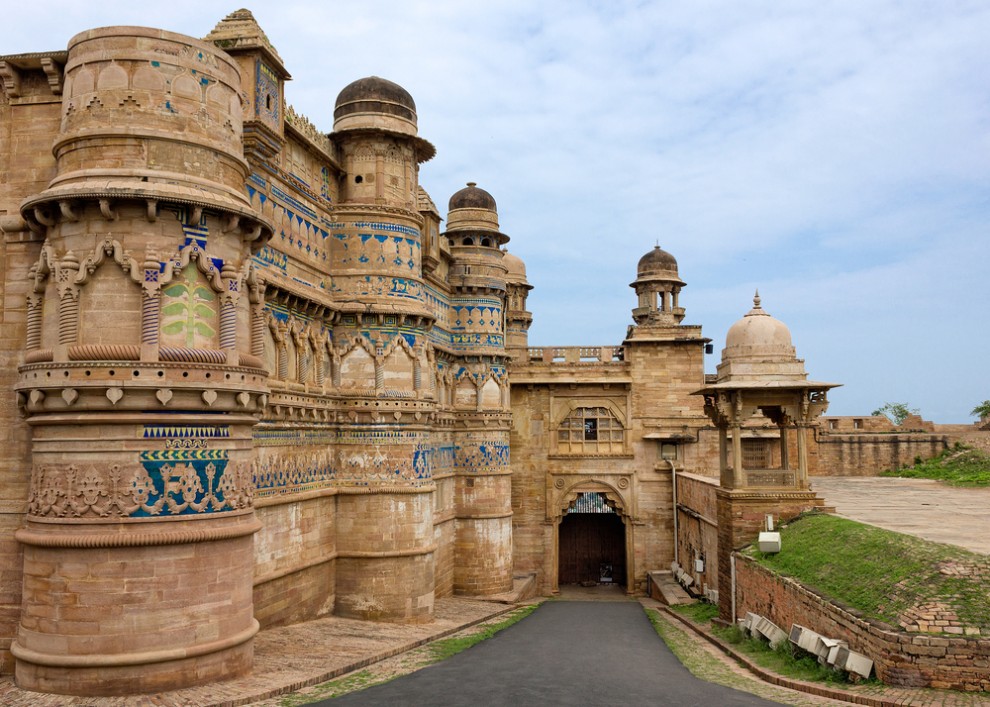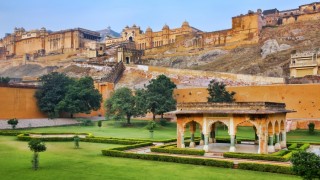Let us take you to the journey of Gwalior, the tourist capital of the heart of Incredible India i.e. Madhya Pradesh. Gwalior is very rich in its cultural heritage due to the footprints left by great dynasties like Pariharas, Tomars, Kachwahas and the Marathas. Various mighty forts, palaces, monuments and temples stand till today to narrate the rich history of Gwalior.
The modern day Gwalior is well-connected to almost all the major cities of India via direct train routes. You can check IRCTC train availability and book train tickets from your place to Gwalior. A person coming from Delhi, the capital city, can reach Gwalior in just 3 hours with New Delhi-Bhopal Shatabdi Express, the India’s fastest train.
Before planning a trip to Gwalior you must know that temperature at the place goes to extreme levels. So, it is not a place suitable for visit all over the year. Best time to visit Gwalior is pre-winter and spring season.
After reaching the railway station of Gwalior you can hire auto-rickshaw or tempo to reach your hotel. You can get auto-rickshaws 24 hours a day. But be sure to negotiate and come to a justifiable rate as there are no fare meters in the autos of Gwalior.
You can go on eating (even street foods) wherever you feel like because Gwalior is considered paradise for vegetarian food-lovers.
Anyone visiting Gwalior is keen to see the Gwalior Fort. It is not too far from the railway station so you can choose to start your trip from here. Hire an auto-rickshaw from the railway station to the Gopachal Hill. The renowned Gwalior Fort is built at this hill only. This hill houses many ancient Jain idols carved around 15th-16th AD. The front side of the hill is covered with 26 caves. Some of the idols on the hill are very tall; the tallest being 58 feet 4 inches high.
After getting down from the hill, you can proceed towards the Gwalior Zoo that is approximately 1.2Km away. The zoo is famed for its high-quality maintenance and upkeep of the animals with care. It is a protected site with many rare species of animals including white tigers.
Ideally the visit to Gopachal Hill and the Gwalior Zoo will take a whole day. But if you are left with some hours before the dusk you can roam around in the huge garden known as Phool Bagh of which the zoo forms a part. Apart from the zoo Phool Bagh includes a gurudwara, a mosque, a prayer hall and a theosophical lodge in its campus.
After visiting these places, you can go and retire for some hours in your hotel room. Once you get refreshed after some hours of rest you can go out to enjoy the nightlife of Gwalior. The Brown Room, BLU Lounge and 10 Downing Street are some of the best places to hangout during night in Gwalior.
The next morning you can start your journey by visiting Koteshwar Mahadev Temple that is slightly less than 6Km from the railway station. You can then reach Maa Kali Vatika in approx 3-5 minutes of walk and proceed towards Koteshwar Temple that again is at a walk of 2-4 minutes.
After praying in Koteshwar Temple you can proceed towards Gujari Mahal Archaeological Museum. After visiting the archaeological museum, you can proceed towards Tomb of Muhammad Ghaus via the Kila gate. Muhammad Ghaus was the mentor of Tansen, one of the 9 gems of Akbar’s court. The Tomb of Tansen is also built near the tomb of his mentor.
After the tomb of Tansen you can go and visit the royal Jai Vilas Palace, the residence of the Scindia dynasty. This palace whose value in 1874 was 1crore is the perfect example of royalty personified.
Chanderi Sarees are speciality of Gwalior so you can opt for buying it if you plan a shopping. And return to your home with lots of memories of Gwalior.



